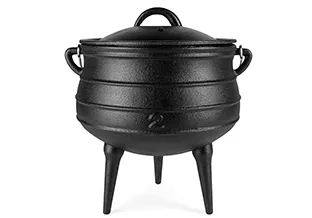
dutch oven braiser
The Art of Cooking with a Dutch Oven Braiser
When it comes to versatile cooking tools, few can compete with the Dutch oven braiser. This sturdy piece of cookware has been a staple in kitchens for centuries, cherished for its ability to both braise and simmer, creating rich, flavorsome dishes that are sure to impress. From cozy stews to succulent roasts, the Dutch oven braiser is your go-to companion for a wide variety of culinary adventures.
What is a Dutch Oven Braiser?
A Dutch oven braiser is typically made from heavy cast iron, often coated with enamel, which not only makes it visually appealing but also enhances its heating capabilities. The design usually features a wide, shallow base and a tight-fitting lid, which is perfect for both browning meat and slow-cooking it in a flavorful liquid. The combination of these features creates an ideal environment for the Maillard reaction, which develops those complex flavors that make a dish truly memorable.
Benefits of Using a Dutch Oven Braiser
One of the main advantages of using a Dutch oven braiser is its ability to retain and distribute heat evenly. This feature is particularly beneficial for slow-cooking methods, allowing you to create tender cuts of meat without drying them out. Additionally, the weight of the lid ensures that moisture is retained, resulting in juicy and flavorful meals.
Another key benefit is its versatility. A Dutch oven braiser can seamlessly transition from stovetop to oven, allowing for a variety of cooking techniques, such as browning, braising, baking, and even frying. Whether you're preparing a hearty beef stew, cooking a whole chicken, or baking a rustic cobbler, you can rely on this cookware to help you achieve delicious results.
dutch oven braiser

Cooking Techniques with a Dutch Oven Braiser
Braising, where meat (or vegetables) is first seared and then cooked slowly in a small amount of liquid, is the hallmark technique for which the Dutch oven braiser is known. The process begins by heating the pan on the stovetop, adding a bit of oil, and browning the meat until it's golden and caramelized. This step not only enhances the flavor but also builds a fond—the delicious bits stuck to the bottom of the pan, which can be deglazed with wine or broth to create a rich sauce.
Once the searing is complete, you can add aromatics such as onions, garlic, and herbs, followed by the cooking liquid. After bringing it to a gentle simmer, cover the pot and transfer it to a preheated oven. The slow, moist heat will break down tough cuts of meat, turning them into succulent delights.
Cleaning and Maintaining Your Dutch Oven Braiser
To ensure that your Dutch oven braiser remains a treasured kitchen companion, proper care is essential. After cooking, let the pot cool gradually and avoid sudden temperature changes that could cause cracking. Clean it gently with warm water and mild soap, and avoid harsh scrubbers that can damage the enamel. A well-maintained Dutch oven braiser can last a lifetime, becoming even more seasoned and flavorful with each use.
In conclusion, the Dutch oven braiser is an indispensable tool for any home chef. Its ability to cook a wide range of dishes with ease, paired with a durability that stands the test of time, makes it a worthy addition to your kitchen arsenal. Whether you’re an experienced cook or just starting on your culinary journey, embracing the art of cooking with a Dutch oven braiser will elevate your meals and enhance your cooking experience. So, pull out that trusty pot, and let the cooking adventures begin!
-
Cast Iron Cookware- Baixiang County Zhongda Machinery Manufacturing Co., Ltd.|Non-Stick&SmokelessNewsAug.09,2025
-
Black Cast Iron Pancake Pan - Baixiang County Zhongda Machinery | Non-Stick, Heat ResistantNewsAug.09,2025
-
Versatile Cast Iron Ovens: Non-Stick, Round & XL Dutch OvensNewsAug.09,2025
-
High Quality Kitchen Durable Black Round Cast Iron Cookware Pancake Crepe Pan|Non-Stick&Heat RetentionNewsAug.09,2025
-
High Quality Kitchen Durable Black Round Cast Iron Cookware Pancake Crepe Pan With Wooden Handle-Baixiang County Zhongda Machinery Manufacturing Co., Ltd.|non-stick surface&even heat distributionNewsAug.09,2025
-
High Quality Kitchen Durable Black Round Cast Iron Cookware Pancake Crepe Pan With Wooden Handle-Baixiang County Zhongda Machinery Manufacturing Co., Ltd.|Non-Stick, Heat Retention, DurableNewsAug.08,2025


